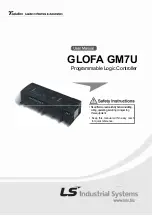
OEM7 Installation and Operation User Manual v4
8
Figures
Figure 1: OEM7 Receiver System
Figure 2: OEM719 Receiver Board
Figure 3: OEM729 Receiver Board
Figure 4: OEM7700 Receiver Board
Figure 5: OEM7720 Receiver Board
Figure 6: Mounting with Standoffs
Figure 8: Mounting with Rails and Clamping Bars
Figure 9: Mounting the High-Density, 60 Pin Connector
Figure 10: OEM7720 Heat Spreader Mounting Geometry
Figure 11: OEM719 Connector and Indicator Locations
Figure 12: OEM729 Connector and Indicator Locations
Figure 13: OEM7700 Connector and Indicator Locations
Figure 14: OEM7720 Connector and Indicator Locations
Figure 15: COM3 and USB Multiplexed on OEM719
Figure 16: OEM729 COM3 Multiplexed with EVENT2 and USERGPIO
Figure 17: Basic OEM7 Receiver Connection Interfaces (example)
Figure 18: Basic Differential Setup
Figure 19: Positioning Change Without STEADYLINE
Figure 20: STEADYLINE Maintain
Figure 21: STEADYLINE Transition
Figure 22: STEADYLINE Prefer Accuracy
Figure 23: STEADYLINE UAL- Warning Limit Example
Figure 24: STEADYLINE UAL - Out of Bounds Example
Figure 25: Transfer COARSE Time from Fine Clock to Cold Clock Receiver
Figure 26: Transfer FINE Time from Fine Clock to Cold Clock Receiver
Figure 27: Transfer FINE Time from Fine Clock to Warm Clock Receiver
Figure 29: Location of Receiver Status Word
Figure 30: Reading the Bits in the Receiver Status Word
Figure 31: Location of Receiver Error Word
Figure 32: Reading the Bits in the Receiver Error Word
Figure 34: Status LED Flash Sequence Example
Figure 35: Cross-Over Ethernet Cable Configuration—OEM7 Receiver
Figure 36: Dynamic IP Address Configuration through a DHCP Server—OEM7 Receiver









































